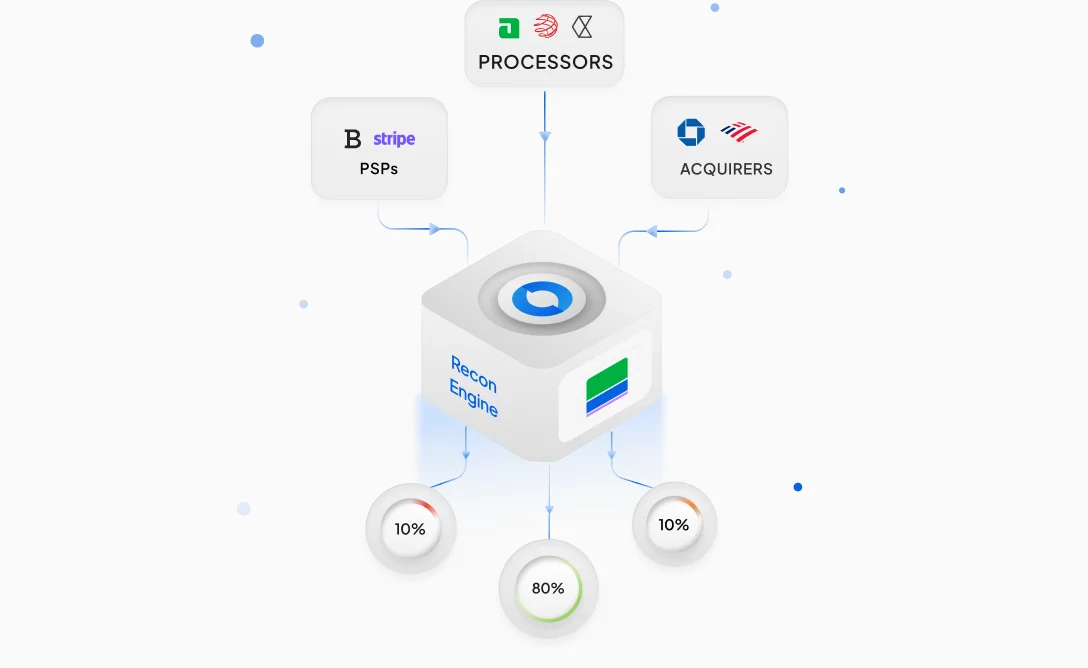Payment Networks - Meaning and How It Works?
When discussing the movement of funds from one account to another, it is easy to forget how the process happens due to how well-rounded and easy it is. However, when businesses come to monitor this process, they realize the intricacies of it and the power payment networks hold in influencing successful transactions. Let us explore what is a payment network and how big of a role it plays in our daily lives.
What Are Payment Networks?
Definition of Payment Networks
A payment network is a financial system infrastructure that enables the movement of funds from one party to another. In simple terms, payment networks are a form of association between different financial organisations that help facilitate transactions between two or more parties.
Key Players Involved in Payment Networks
Payment networks can be distributed in four categories: Credit Card networks, Electronic Fund Transfer (EFT) systems, ATMs, and Peer-to-Peer (P2P) payment networks.
Within these categories, some major players in payment networks include:
- Mastercard (credit card networks)
- Visa (credit card networks)
- Automated Clearing House or ACH (EFT systems)
- Clearing House Automated Payment System or CHAPS (EFT systems)
- Cross-Border Interbank Payment System or CIPS (EFT systems)
- Cirrus by Mastercard (ATM networks)
- Plus by Visa (ATM networks)
How Do Payment Networks Work?
Flow of a Transaction Through a Payment Network
- Credit Card networks
The cardholder enters their credit card information in the payment portal. This signals the card issuer or the issuing bank to loan them the payment amount to complete the purchase. The issuing card network gathers all the relevant information about the cardholder and the purchase they are making and sends this information to the acquiring bank. Before the final payment goes through by the card issuing bank, the acquiring bank requests payment authorisation from them through the card network.
- EFT Networks
All financial institutions and banks connected to the EFT ecosystem can transfer funds between them electronically. There are many different types of EFT networks such as ACH, wire transfers, CHIPS, SEPA, CIPS, etc. All of these networks have their own processes, but the crux of it is that the customer issues a request to their bank to electronically transfer funds from their account to the acquirer’s account.
- ATMs
Financial institutions across the globe get into partnerships with ATM networks so that cardholders can access ATMs to withdraw & deposit cash, and transfer funds between accounts. Globally, Plus and Cirrus are the two largest ATM networks.
- Peer-to-peer (P2P) payment networks
P2P networks enable individuals to transfer funds without using the financial institution network infrastructure. With P2P payment networks, individuals can select their preferred payment method, such as credit card, debit card, or wire transfer, to send or receive funds from a payment platform linked to their personal accounts.
The Role of Payment Processors and Banks
Payment processors and banks play a key role in the working of payment networks. Different payment networks must form alliances with banks and processors for consumers to gain access to the payment methods. For instance, a payment processor not affiliated with a credit card company cannot process online transactions from that card.
How Authorization and Settlement Occur
The buyer initiates a payment request, which the POS machine or system sends to the acquiring bank for authorisation. This payment request includes key information such as the transaction amount and buyer’s details. The issuing bank then assesses the risk of the transaction request and verifies it. The merchant can only request the settlement of the transaction after this verification is complete. The acquiring bank then forwards this verification status to the issuing bank, and they process the transaction. All of these requests and communications between banks and processors happen via payment networks.
The Importance of Payment Networks in Modern Commerce
Ensuring Security and Reliability
In modern commerce, payment networks play a critical role in securing transactions. With advanced encryption of transaction details and fraud detection technologies, payment networks safeguard sensitive payment and personal information. This ensures reliable and secure transactions and encourages more consumers and businesses to engage in digital payments, fostering a secure and efficient ecosystem essential for modern commerce.
Global Reach and Interoperability
Payment networks enable seamless transactions across borders, connecting different financial institutions worldwide. Their interoperability allows individuals and businesses to transfer funds effortlessly, regardless of geographic location or currency. This global reach is vital for international trade and e-commerce, allowing merchants to accept payments from customers around the world and driving economic growth in a connected global marketplace.
Challenges and Limitations of Payment Networks
Transaction Fees and Costs
Payment networks often impose transaction fees that can accumulate, especially for businesses handling large volumes of payments. These costs, including interchange fees and service charges, can reduce profit margins and discourage small businesses from adopting certain payment methods.
Regulatory and Compliance Issues
Payment networks face complex regulatory challenges across different countries. Compliance with local financial laws, anti-money laundering (AML) standards and data protection regulations can be costly and time-consuming, hindering seamless cross-border operations.
The Future of Payment Networks
Innovations in Digital Payments
With newer and evolving innovations like blockchain technology, digital currencies, and real-time payments through e-wallets, the future of payment networks will evolve as well. These advancements offer faster, more secure transactions while reducing costs and reliance on traditional banking systems. Emerging technologies like these are expected to enhance payment efficiency further and expand access to global financial systems.
The Impact of Blockchain on Payment Networks
Blockchain technology is revolutionising payment networks by enabling decentralised, transparent, and secure transactions. It reduces intermediaries, lowers transaction costs, and enhances cross-border payment efficiency. As blockchain adoption grows, it has the potential to reshape traditional payment systems, offering faster and more secure alternatives.
Time to Put Payment Networks to Use
Now that you understand what payment networks are and how they function, it is time to put them to use for your business. The next step is to pick a trusted payment processor with a diverse affiliation with payment networks that enable all types of preferred payment methods relevant to your customers. Explore Juspay's secure payment solutions and start optimising your business’s payment network integration today.
























